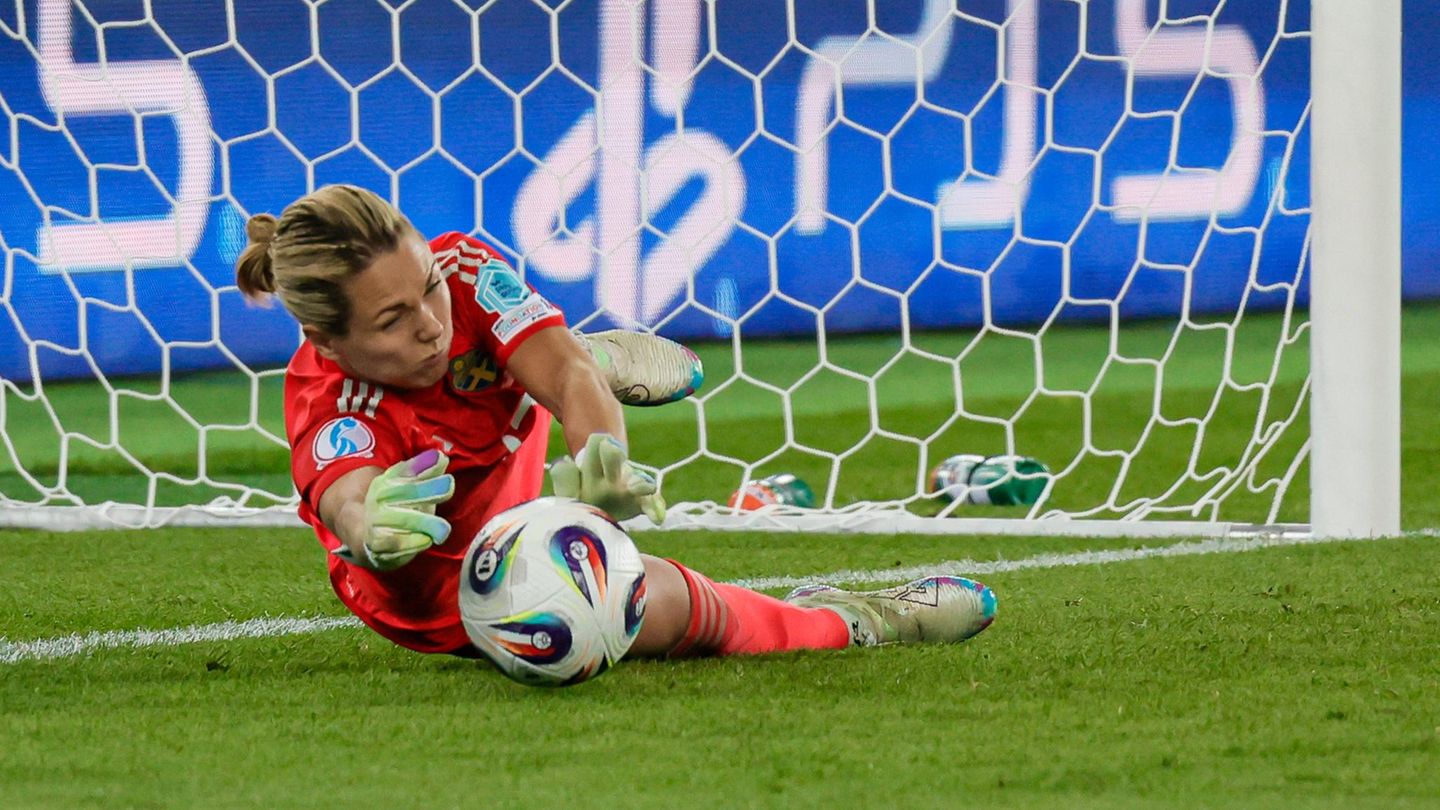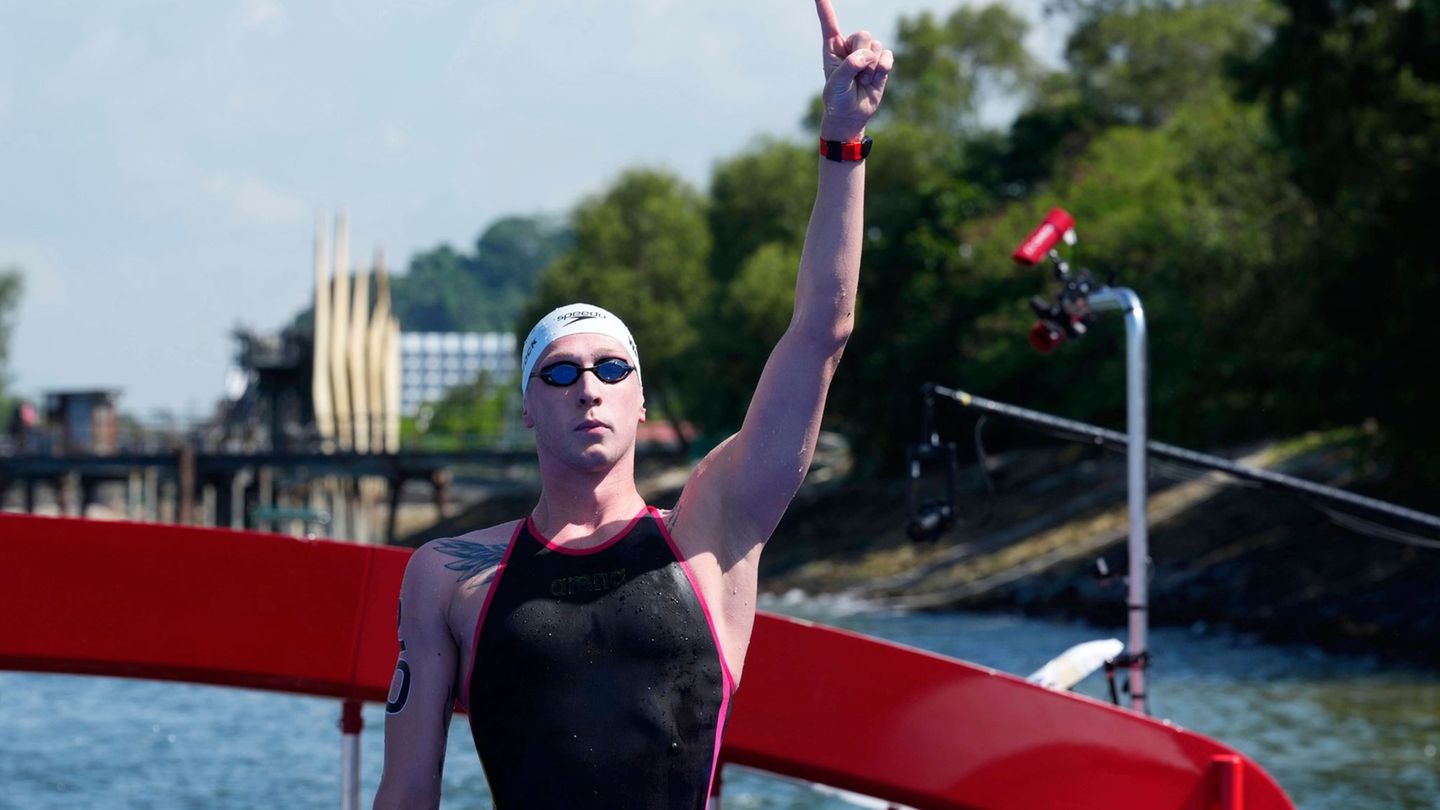The July flood devastated parts of North Rhine-Westphalia and Rhineland-Palatinate. Now Chancellor Olaf Scholz got an idea of reconstruction. He’s progressing.
Nine months after the devastating July floods in North Rhine-Westphalia and Rhineland-Palatinate, Chancellor Olaf Scholz found out about the status of the reconstruction on Tuesday. First stop: Bad Münstereifel, southwest of Bonn.
It’s 1:10 p.m. when a black limousine pulls up in front of City Hall. “Hello, Mr. Chancellor!” calls a boy. But it’s not him at all, it’s NRW Prime Minister Hendrik Wüst (CDU). Visible confusion in the boy and some other children. There is no Scholz in the next limousine, but Federal Interior Minister Nancy Faeser (SPD). Only then, when the tower of the old collegiate church has already struck a quarter past one, does a third car stop. “That’s him!” Short wave, short words. Interview with the mayor in the town hall.
Then it goes down to the Erft, which now ripples tranquilly along. There are excavators and trucks everywhere, everything looks very much like work. Most outlet shops – for which Bad Münstereifel is known – are still closed. Some are already being plastered, others still have dehumidifiers. “When Merkel was here, the situation was different,” reports Sarah (22). “Now you can see people smiling again.”
Recognized immediately
Scholz stands on a provisionally secured bridge, still without railings. He also stops by an art gallery and the restaurant “En de Höll” (In Hell). The Dutch tourist Anita from Utrecht is amazed when she suddenly stands in front of him. Yes, she recognized him immediately, she says. “Hey, this is Scholz”.
A student on the way home says: “It’s just a promo!” Another calls out to his buddies: “We saw him live and in color. Moritz has an autograph from him!” But Moritz makes it clear: “Not that, but I have a video.” Lessons have been canceled for her, it was said that hands-on politics is more important. Julian Seliger (15) from St. Michael-Gymnasium says: “It’s really good that he’s looking at what’s going on here. That it’s still up to date for him.” Scholz also had a conversation with some of the students who were particularly involved in the clean-up work – in camera. Then he continues to the Ahr Valley.
Gerda Zwingmann (82) has spent her whole life in Bad Münstereifel. She lives in a listed building from the 15th century in the old town. “The water was 1.80 meters high for us,” she says. When it took off again, a picture of destruction presented itself: “No more floor inside, holes in the walls, no more electronics.” It took some time for something to happen. In the meantime, however, she is certain: “It’s getting slow now.” Although it was a seven-month campaign to get the aid money, it has now worked.
Actually, one could now, in spring, look a little more optimistically into the future. Were it not for the war in Ukraine. “I’ve already experienced a war,” says Gerda Zwingmann. In 1944 she was five years old. “I have a memory of how we ran into a rock cellar when the bombs fell.” She pauses for a moment. “Perhaps we should consider making it afloat again. You never know what’s to come.”
Source: Stern
David William is a talented author who has made a name for himself in the world of writing. He is a professional author who writes on a wide range of topics, from general interest to opinion news. David is currently working as a writer at 24 hours worlds where he brings his unique perspective and in-depth research to his articles, making them both informative and engaging.




